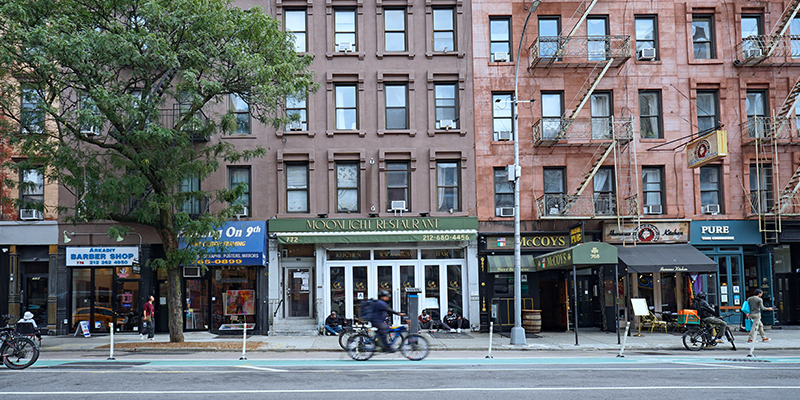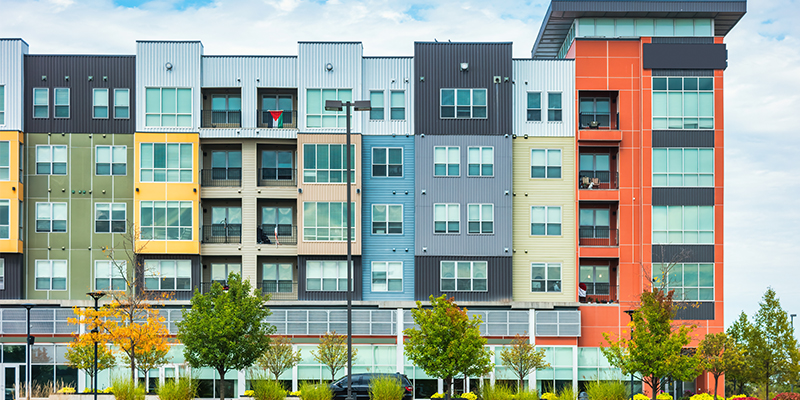Two and a half years into the COVID-19 pandemic, the office sector is still experiencing high vacancy rates and declining listing rates. Coworking spaces, on the other hand, are making a comeback after seeing their usage swiftly drop with the onset of the pandemic.
As office-using business sectors adopt long-term work-from-home and hybrid models, coworking and flex spaces are emerging as one solution for businesses’ space demands.
WeWork’s occupancy rates are back to their pre-pandemic levels, and the number of memberships in the coworking giant is at a record high. IWG, along with other flex and coworking providers, is also reporting overall revenue growth.
CommercialCafe and CoworkingCafe anticipate that this commercial asset type will gain popularity over the next few years due to the increasing demand for coworking spaces and their lower operating expenses compared to traditional office settings.
This is particularly true given that the total amount of coworking and flexible office space in the U.S. is now only around 117.5 million square feet, with much of this stock concentrated in just a few markets including Manhattan, Los Angeles, Chicago, Washington, D.C., and Dallas.
Charlotte, North Carolina, Continues to Lead in National Listing Rates
The average full-service equivalent listing rate in the top 50 U.S. office markets was $37.75 in July, up 17 cents from the previous month but down 2.3% from the previous year. Additionally, the national vacancy rate increased 10 basis points both month-over-month and year-over-year to level off at 15.1%.
With a 16.8% gain year-over-year, Charlotte, North Carolina, continued to lead the market in price growth for the fifth consecutive month, raising its average full-service equivalent listing rate to $33.62 per square foot. That also represented a 17-cent increase over June’s figures.
Charlotte’s performance is even more impressive considering that its vacancy rate decreased 130 basis points year-over-year despite a 4.9 million-square-foot flood of new office space in 2021, driven by the city’s office-using financial sector. Charlotte now has 4.3 million square feet of new stock under development, the equivalent of 5.6% of its current inventory, while new deliveries of office space totaled 338,000 square feet year-to-date.
Along with the life science hubs of San Diego and Boston, which had listing rate increases of 13.9% and 15.2% year-over-year, Charlotte was one of only three U.S. cities where listing rates increased by double digits.
Office Sales in Three Major Areas Surpass $3 Billion
U.S. office sales have totaled $51.9 billion across the U.S. so far this year; of that amount, $8.2 billion was closed in July alone, nearly matching June’s $8.4 billion sales volume. The year-to-date national sales prices posted a $265 per square foot sale price in July but fell $7 per square foot month-over-month.
Investors are continuing to shift their focus more and more toward life science hubs like Boston and the San Francisco Bay Area, where office occupancy rates are noticeably higher as many life science jobs are mostly performed in person rather than remotely.
The $446 million purchase of Stanford Research Park by Alexandria Real Estate Equities was the San Francisco Bay Area’s priciest sale so far this year, serving as a prime example of the allure of life science industries in the office sector. The $1,527 per square foot sale price from that transaction helped the San Francisco Bay Area’s year-to-date sales total of $3.07 billion.
Along with Manhattan and Boston, the San Francisco Bay Area was one of three areas where year-to-date sales volumes have now crossed the $3 billion mark. Five other regions, topped by Dallas-Fort Worth, finalized office purchases totaling more than $2 billion each.
Pipeline for Boston Office Spaces Reaches 12.3 Million Square Feet
As of July, there were 149.5 million square feet of office space nationwide under development, or 2.2% of the existing national stock. Only 31% of office projects are being created in suburban markets, which reflects the shifting tendencies of post-COVID-19 office developments. In contrast, suburban areas saw the completion of 42% of the 28.7 million square feet delivered in the first seven months of 2022.
Planned projects represented 6.5% of the stock as of July, a small increase from 6.2% in June. Given the challenges facing the office sector, it is unclear how much of this planned stock will actually begin construction as businesses continue to adapt to changing office needs.
Except for a few Sunbelt office centers like Austin, Texas; Nashville and Charlotte, North Carolina, where office projects under construction made up 9.5%, 6%, and 5.6% of the local inventory, markets with significant life science sectors continued to outperform other office markets. Boston and San Diego, two well-known life science hubs, were among the best-performing markets in terms of new construction.
Boston is constructing the equivalent of 4.9% of its existing stock, for a total office development footprint of 12.3 million square feet. San Diego has 4.8 million square feet of office space under construction, or 5% of its existing stock. Since the start of the pandemic, more than 40% of all new Boston office projects have been life science developments. Moreover, excluding projects with only a partial life science footprint, 55% of developments that have broken ground since the beginning of 2021 are destined for the life sciences sector.
For more details on the performance of the U.S. office market, as well industry and local insights, find the full report on CommercialEdge.








